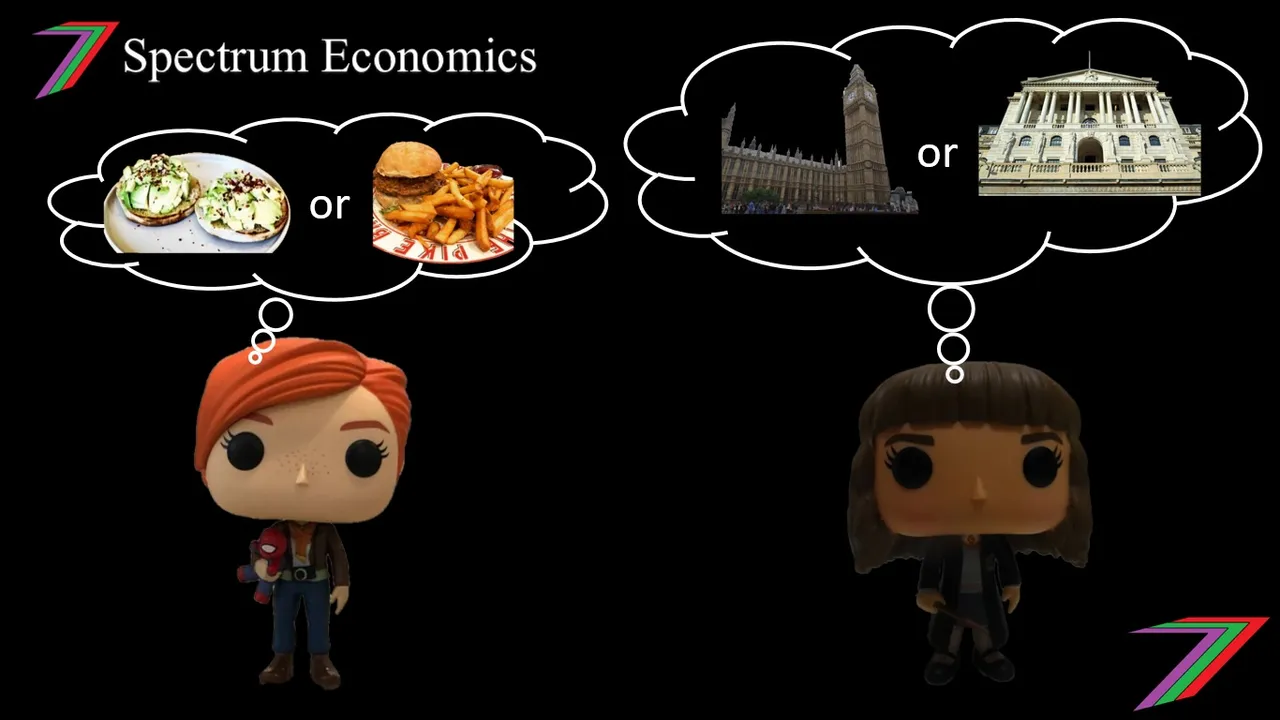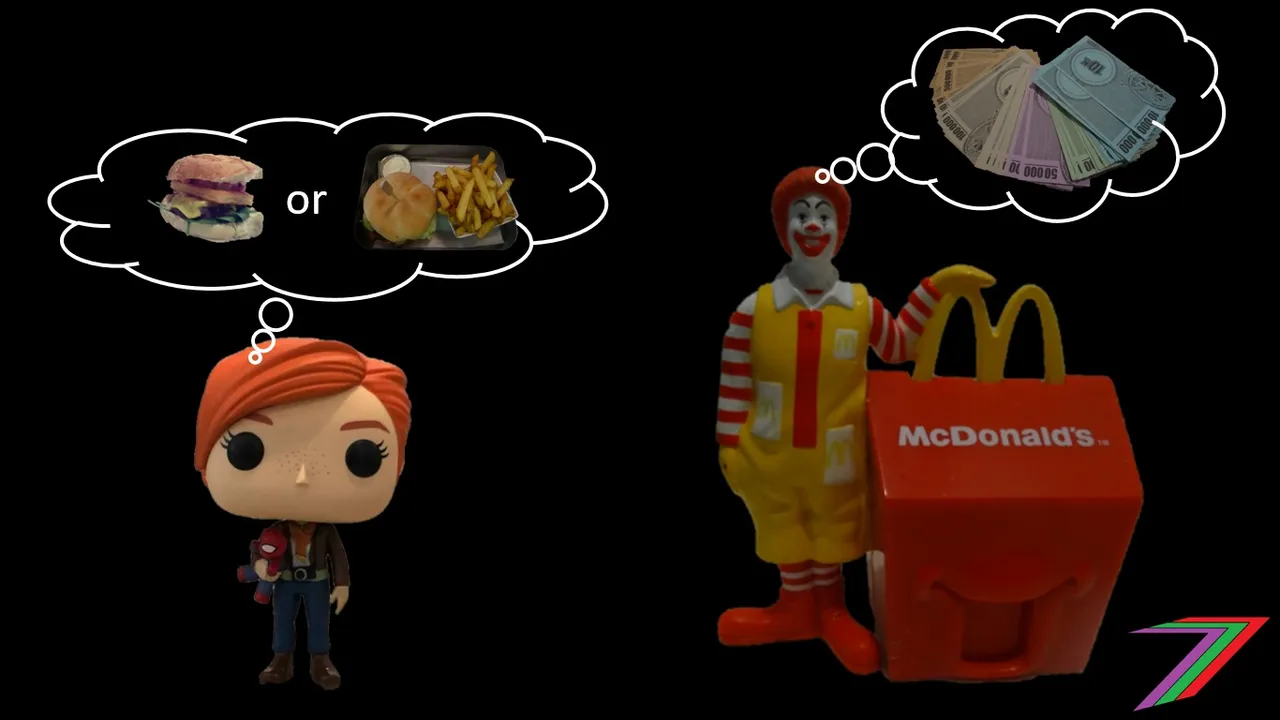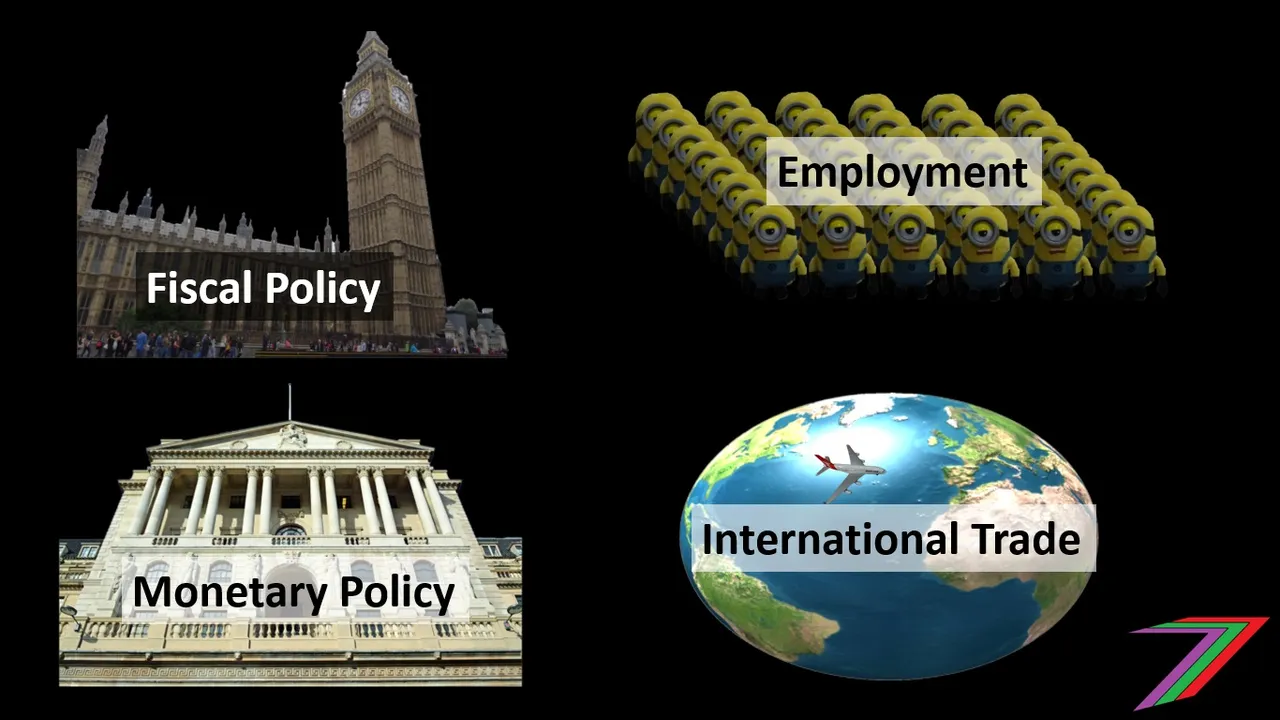Hi Everyone,

(Note: First post on palnet)
Economics is broadly split into microeconomics and macroeconomics. The same economic principles apply to both microeconomics and macroeconomics but the scale is different. In this post, I will highlight the differences between these two important subdivisions of economics.
What is microeconomics?

Microeconomics focuses on individual behaviour (both people and firms) and the impact on particular markets. Microeconomics considers decisions made by individuals. It focuses on why people make particular decisions. Microeconomics also pays close attention to decisions made by individual firms as well as the effect on particular markets. Microeconomics can also include the relationships between various markets. For example, how the growth of one market may enhance or hinder the growth of another market.
Examples of subject matter considered in microeconomics
People make many decisions on a daily basis. Microeconomics considers the logic behind many of these decisions. For example, why does a person buy a cup of coffee from Shop A and not Shop B? It could be because the person prefers the taste of the coffee at Shop A. It could be because the coffee is priced lower at Shop A. It could be because the person is not in the mood for coffee from Shop B. It could be because the person’s friends are buying coffee at Shop A. It could be a combination of some of the above reasons or any other possible reason that makes buying coffee from Shop A more appealing than Shop B.
Microeconomic theory tells us that the person bought coffee from Shop A and not Shop B because the person is getting better value for their money. If Shop A raised the price of their coffee beyond a particular price, the person will likely buy their coffee from Shop B or another alternative shop that sold coffee or an acceptable alternative beverage.
Analysing behaviour of firms is a little easier than that of individual people. The objectives of a firm are less varied than individuals. Firms aim to either maximise profits, market share, revenue or minimise or costs. They may also have some environmental or social objectives but they are normally considered secondary. For example, a firm aiming to maximise profits will aim to produce and then sell an output where the marginal costs of production equals the marginal revenue of the last unit sold (marginal costs and revenue to be explained in more detail in another post).
I have written about many microeconomic topics. Below are some of the links to these posts.
Economics Basics - Utility and Choice
Economics Basics - Cooperation and Specialisation
Economics Basics - Time vs Quantity
Demand and Supply - Part 1 Partial Market Equilibrium
Demand and Supply - Part 2 Demand and Supply from an Individual's Perspective
Demand and Supply - Part 3 Demand and Supply from a Firm's Perspective
The Different Types of Economic Efficiency
Economic efficiency explained in video
Economic Concepts #1 - Utility
Economic Concepts #2 - Specialisation
Economic Concepts #3 - Substitutes vs. Complements
Economic Concepts #4 - Auctions
Economic Concepts #5 - Demand, Supply and Equilibrium
Economic Concepts #6 – General Equilibrium
Economic Concept - Demand and Supply (Video)
Economic Concepts - Complements and Substitutes Explained
Economic Concepts #7- Indifference Curves
Economic Concepts #8 - Giffen Goods
Specialisation - Comparative Advantage
Economic Concepts #9 – Price elasticity of demand
Economic Concepts - Auctions (Video)
Economic Concepts - Giffen Goods (Video)
What is macroeconomics?

Macroeconomics is the broad perspective or the aggregate view of the economic system. Macroeconomics focuses on the economy as a whole. Macroeconomic indicators are used to present the performance of the economy. These indicators measure income, employment, aggregate price changes, national debt, trade surpluses or deficits, income inequality, and many more.
A large portion of macroeconomics is dedicated to improving the functioning of the economy through various policies. There is direct Government intervention such as building infrastructure, providing services, offering subsidies to particular industries, and taxing other particular industries. This type of intervention is referred to as fiscal policy. There is less direct intervention through changing the money supply. The reserve bank can increase or decrease the supply of money. Increasing the supply of money reduces the cost of money (interest rate). A lower cost of money stimulates investment and consumption. Increasing money supply often leads to higher prices (inflation). Decreasing the supply of money has the opposite effect.
Policies are often described as expansionary or contractionary. Expansionary policies include higher Government expenditure, lower taxes, and lower interest rates. Expansionary policies are intended to increase economic activity. Contractionary policies include lower Government expenditure, higher taxes, and higher interest rates. Contractionary policies are generally used to reduce inflation.
Policies targeted at the macroeconomic level also have implications at the microeconomic level as well. People will adjust their own patterns of behaviour based on macroeconomic policies. Changes made by individuals affects the aggregate figures and the outlook of the economy as a whole. There is debate about which types of policies are most effective as well as which policies create unattended effects.
Macroeconomics also explores the relationships between countries and regions. Macroeconomics studies the trading relationships between countries. It explores the balance of trade (difference between value of exports and imports) and balance of payments (difference of value of payments in and out of the country). Macroeconomics considers the differences and changes in the value of the country’s currency in respect to the currencies of other countries. Policies, which determine the extent of free trade, are also considered an important part of macroeconomics.
I have written about several areas in macroeconomics. Below are some of the links to these posts.
Macroeconomics - Fiscal Policy and Monetary Policy
Macroeconomic - Fiscal Policy and Monetary Policy Dtube Video
Trade, money, debt, waste, and power
Conclusion

Even though microeconomics and macroeconomics are typically discussed separately, they are closely interrelated. These relationships work in both directions. Significant changes in individual behaviour (micro) affects the bigger picture (macro). Significant high-level decisions (macro) filter through and affect individual decision-making (micro). The relationships between microeconomics and macroeconomics can also be analysed from either direction. Economics models can be built from the ground up (micro-to-macro) or from the top down (macro to micro).
Many economic concepts are applicable to both macroeconomics and microeconomics. As these concepts support the foundation of economics and are not dependent on scale. The theory of demand and supply is the best example of a theory that is as much applicable to macroeconomics as it is to microeconomics.
More posts
If you want to read any of my other posts, you can click on the links below. These links will lead you to posts containing my collection of works. These posts will be updated frequently.




Steem - The Future of DApps




